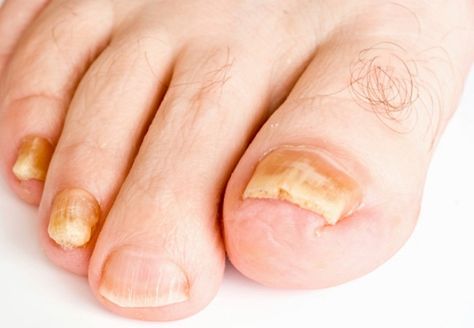 When nails wind up thick and yellow they can become difficult to manage. Thick toenails are not only unsightly, but also can be a sign of a more serious issue that may need treatment. Narrowing down what is causing the nails to become thicker is essential to finding an appropriate treatment for the condition so that you can maintain optimum nail health. Some nail conditions may also cause damage to the skin and surrounding area or could be contagious, so it's important to address these issues as soon as they become apparent.
When nails wind up thick and yellow they can become difficult to manage. Thick toenails are not only unsightly, but also can be a sign of a more serious issue that may need treatment. Narrowing down what is causing the nails to become thicker is essential to finding an appropriate treatment for the condition so that you can maintain optimum nail health. Some nail conditions may also cause damage to the skin and surrounding area or could be contagious, so it's important to address these issues as soon as they become apparent.
Causes of Thick Toenails
There are multiple causes that can lead to thickened toenails.
1. Injuries. In many cases injuries to the toenail can cause them to become thicker as they heal. Those who play sports which are hard on the feet such as soccer, or those who perform activities such as dancing in closed shoes can be at risk for these kinds of injuries. In this case, the thickening of the toenails is often temporary and will return to normal when the damage is healed.
2. Fungus. In some cases, fungus can cause the toenails to become thicker. Fungus growing around the nail can cause the nail to separate from the nail bed as the fungus fills in the area. In this case, the nail will often become yellow or brown in addition to becoming thicker.
3. Some skin conditions can also affect the toenails and cause them to become thicker. Issues such as eczema and psoriasis can cause the dead skin cells around the nails to become inflamed or irritated. As this irritation becomes more severe you can wind up with thick toenails that are uncomfortable and difficult to maintain.
4. Poor circulation can also cause the toenails to thicken. Conditions such as diabetes which cause damage to the digits or make it harder for blood to flow to the toes will lower skin quality, and therefore the quality of the nails in this area.
How to Treat Thick Toenails
According to the different causes shown above, treatments for thick toenails are also various. Both home care and medical treatment can be applied to cope with this condition.
1. Trim toenails carefully. You will need to trim your toenails carefully once they have become thicker. Thick toenails are easier to split and irritate if pressure is put on them incorrectly. Start by soaking your feed in warm water for approximately ten minutes. Using nail nippers rather than standard nail clippers to ensure that you are able to cut through the nail without putting too much pressure on the nail. Take your time and cut straight across the nail to avoid developing a crack or ingrown toenails later. You can also reference the table below to learn about appropriate treatment options based on the nature of your condition.
2. Try natural remedies. In less severe cases, natural remedies can be used to help treat a thickened toenail. A mixture of tea tree oil and olive oil applied to the nail can help soften the nail so it becomes less thick. Apply the mixture to the toenail with a cotton ball twice a day until the nail returns to normal.
3. Soak feet in vinegar. You can also soak the feet in vinegar for 20-25 minutes a day to help soften them. Fill a tub with warm water and add 3-4 tablespoons of apple cider vinegar to soak your nails. After the feet have dried, gently buff away the top layer of the nail that has loosened from the treatment. Repeat this treatment three times a week until the nails are no longer overly thick.
4. Use acidic gels to remove excessive layers. Some acidic gels such as Nonyx gel can be used to remove the excessive layers of the nails that have built up. The high Ph of the gel will help kill off any infections in the area when gently removing the debris that has built up on the top of the nail.
5. Try medical treatment. Fungal infections will require medical treatment from your doctor. Oral and topical medications are available based on the nature of the infection. Follow any instructions associated with your prescription to ensure that you are getting the proper sized dose for your condition.
6. Surgically remove. In extreme cases where the nail starts curling or the infection does not react to medication it may be necessary to have the nail surgically removed so that a new, healthy nail can grow. Once the surgery is complete, your doctor will give you a list of instructions related to your condition to prevent the necessity for future treatment.
Table 1 Treatments for Thick Toenails
|
Medical Treatments |
Natural Treatments |
|---|---|
|
Topical or oral medication prescribed by your doctor |
Soak toenails for 10 minutes, and then trim using nail nippers |
|
Surgery to remove the infected nail |
Apply a mixture of olive oil and tea tree oil to the nail with a cotton ball twice a day |
|
Apply Nonyx nail gel to the feet to remove excess nail growth |
Soak the feet in a vinegar solution, and then buff away the top layer. Repeat three times a week. |
